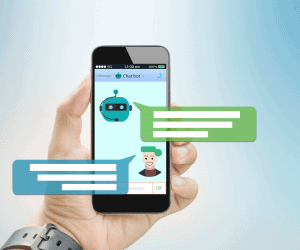As Part 4 of the Hehsed’s Digital Human Capital Framework, the focus on Customer Experience and Customer Journey will be the adoption of the framework and methodology by the employees, in support of their organization’s Digital Transformation strategy.
Organizations around the world have started to realize that ultimately, all their functions within, fundamentally aims to provide for what the customers want and need. Every employee needs to learn about their customer journey and how their role plays a critical influence on the overall outcome of their customer experience. In fact, customers now demand a digital experience as they are surrounded by connected devices, providing the seamless digital experience, that they are spoilt for choice.
Only if an organization can see this, they will then favour investing their resources and focus to ensure that every single of their employee will know how to serve their customers better. It starts with understanding their customer journey and here are 5 attributes towards building a successful customer experience culture:
1. Outside-IN strategy
Traditionally, many companies build their workflow, functions, processes, and departments based on how they internally perceive services or products are delivered to the customers. They then make their customers adhere to their internal processes, in order to receive the services. Although this common, it is fundamentally wrong. We ought to understand the full requirement, likes, wants, needs, preference of the customers and translating them to how the workflow, process and functions, to provide the ultimate great customer experience that is needed by the clients today. The customer journey should determine how they like to receive their product and services. What the customers want from the OUTSIDE, will determine what will be on the INSIDE of the organisation. Therefore, this needs a total “mindset” change.
2. Customer Personas
To fully understand the needs of the customers, it will be critical to building some hypothesis on who the real customers are. A Persona is defined as a researched-base fictional character, used in design-centered marketing, that represents a typical customer buyer or a user, might consume the good and services provided by the supplier. Both qualitative and quantitative research will be needed to understand and uncover the customers’ buying preference and their emotional states throughout their customer journey. This input will shed light on where the stress points are and opportunities for providers in their strategies to enhance their customer’s experience.
3. Multiple Touchpoints
While building the Customer Journey Maps, the various and multiple touchpoints will be uncovered to provide pivotal decisions are made to resolve potential service gaps. The key is to return and enhance the value to the customer at each touchpoint. Customers see us as ONE experience regardless whether their touchpoints are with sales, finance, customer service, supply chain, etc. However, many organizations still function as vertical silos, providing vertical solutions to the same ONE customer. Every touchpoint is another opportunity to sell and upsell what the customer is currently buying. Therefore, understanding the motivation and impact at each touchpoint will also allow each employee to play there part in the integral formation of a holistic customer experience.
4. Build an Experimental Culture
Having a culture that consistently finds and builds solutions is where most of the organizations want to be. Once an opportunity is identified through the customer journey map, the relevant teams then spring towards building solutions towards the gap. As there should be multiple ways of problem-solving, the team then learn to prioritize and experiment with the ideas with a quick succession of tests and re-tests with feedback loops. Some successful organizations embark on thousands of experiments annually. What does fail, should fail fast! In doing so, this application of Agile methods will provide a higher quality of the solution.
5. Ownership @ all levels
As each employee needs to start learning about their customer journey and derive a deeper understanding on their customer experience, it is almost impossible not to ensure they take ownership on their role and task, relating to the impact on their customers. Taking ownership at each level is vital and pivotal to ensure every process and workflow work towards the success of the goals. However, the leadership must also trust and level up the level of autonomy when comes to decentralising decision making, in the spirit of enhancing agility to the process. Ownership comes with accountability and responsibility to ensure that they play their part, so that when the whole thing comes together, it will be a very jointed and seamless flow for the customers, who always see the providers as ONE continuous experience that they have.
Please feel free to reach out to me CLICK HERE TO CONNECT and connect with me if you like to receive more content around Digital Transformation strategies.



